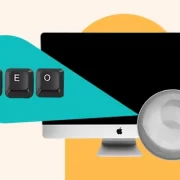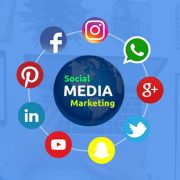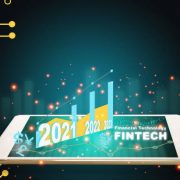Digital marketing is essential for businesses today to be competitive. Everybody spends many hours every day on digital media. This is whether we want entertainment, social interaction, or new products. Brands and businesses that need the right digital strategies in their visual marketing communications programs miss opportunities to influence consumers online.
The use of technology and digital media has led to new customer journeys. These paths are more complex because multiple touchpoints can influence purchase decisions.
The customer lifecycle graphic shows how potential earned, paid, and owned digital media channels or communication tools offline can influence purchase decisions across the customer’s lifecycle.
Please note that MOFU, MOFU, and TOFU are acronyms for Top, Middle, and Bottom-of-Funnel Content, where content is used to support nurturing throughout the customer’s lifecycle.
This visual will help businesses to audit their digital marketing. It is part of a “situation gap analysis” where they can examine whether or not they are adequately investing in digital communications to reach their goals.
This visual highlights the various online marketing channels businesses can use to achieve the best digital marketing results. Although some channels like SEO and social media are well-known, many potential marketing strategies, such as influencer outreach and email retargeting, are less commonly used.
Marketing Definition
It is important to remember that digital uses different communication techniques than traditional marketing. However, the end objectives of digital marketing are not separate from those of conventional marketing. Creating digital goals based on vanity metrics such as followers or likes is straightforward. The Chartered Institute of Marketing developed this definition of marketing.
This definition emphasizes marketing to the customer while also implying the need to link with other business operations to achieve profitability. It is a weak definition of digital activity because it does not emphasize digital communications.
In Digital Marketing Excellence, my co-author PR Smith and me note that digital marketing can be used as a support for these aims:
Identifying The internet can be used to conduct marketing research and find out the needs and desires of customers
Anticipating The Internet offers customers an additional channel through which they can access information and make purchase decisions. It is essential to evaluate this demand to manage resource allocation.
Customer Satisfaction – A critical success factor in any business is customer satisfaction. This raises questions such as: Is the site user-friendly, performs well, is it easy to use, and what standard of customer service is provided? How are physical products shipped?
Types of digital marketing techniques that can be used across six media channels
Marketers must choose which online communication techniques to include in their communications strategy. Marketers use owned, paid, and earned media to describe high-level investments. However, it is more common to refer to six specific digital media channels to identify campaigns and always-on assets.
Consider the six paid, owned, and earned methods available in the digital media channels or communication tools, as shown in the following visual, to simplify prioritization. This combination gives businesses 18 digital communication techniques to think about. Companies with limited budgets for paid media can concentrate on owned and earned strategies.
Search engine marketing
To encourage click-throughs to a website, visibility is achieved on search engines when a user enters a keyword phrase. Paid placements via Google Ads and Bing are two key search marketing strategies. The other is placements in natural or organic listings with search engine optimization (SEO), where clicks from the engine are free.
SEO has owned media because it involves on-page optimization, improving content relevance, and technical improvements to websites to improve crawlability. This can all be monitored via Google Search Console. SEO can also include an earned media component. This increases visibility in search engines by obtaining relevant backlinks from other websites, which counts as a vote or citation.
Social media marketing
This covers both paid social media advertising and organic social media amplification. Companies aim to increase visibility by sharing content on social media pages and owned media feeds. Earned social media is when a partner or publisher shares a brand or updates on social media.
Social media marketing is a crucial category of digital marketing. It encourages customer communication on the company’s site or through social presences like Facebook and Twitter, as well as on specialist publishers’ sites, blogs, and forums. It can also be used as a broadcast medium. For example, companies could use Facebook and Twitter to send messages or invites to customers or partners who have opted into it.
Display advertising
Online ad formats like banners and videos can increase brand awareness and encourage click-through to target sites because ads displayed on publisher websites are often considered separate investments from paid social and paid search ads.
Programmatic Display is where media and target audience are chosen by bidding or trading against other advertisers. Native advertising is where you pay to publish content on a media site, not a banner ad. This is similar to how companies pay for pages in newspapers.
Sponsorship is similar to Display advertising. A brand may pay for its name to appear in a publication or event in both cases.
Digital PR
This involves maximizing positive ‘offsite” mentions of your company, brands, and products by other people, particularly media sites and influencers like celebrities.
Mentions can increase name awareness but also have the advantage of driving visits through links and supporting SEO through backlinks. These mentions can occur on blogs, social networks, or podcasts accessed by your target audience.
Guest blogging is writing an article that is free to another business. It is often a reciprocal arrangement.
Influencer outreach can be used in both B2B as well as B2C communications. This is usually done by working with individuals, not publishers, to gain mentions via their social media, blogs, or podcasts.
Digital PR includes responding to negative and positive online brand mentions and conducting public relations via a website through a social media news center or blog.
Digital partnerships
Setting up and managing long-term agreements to promote your online services through third-party websites, website content, and messaging. Affiliate marketing is a commission-based arrangement in which the advertiser pays only when a sale occurs. This is most useful for the financial, travel, and retail industries. Affiliate websites will be paid traffic when an online sale takes place.
A paid or owned media technique that allows two brands to be featured in email marketing and native advertising. Comarketing is an analogous arrangement. However, it is a contra’ arrangement in which companies share content to increase awareness and leads among their pooled audience.
We set up a comarketing arrangement between Smart Insights publisher and HubSpot martech vendor HubSpot, where we created joint research reports to increase awareness and generate leads. HubSpot has designated comarketing managers from different regions to oversee this activity because they consider it essential.
If you need to learn them, check out their post on the Who, What, Why, & How of Digital Marketing.
Digital messaging
Traditional digital messaging to subscribers to updates focused on Email Marketing. This is still a popular digital media channel because it is cost-effective. However, younger audiences are less likely to use email and more likely to sign up for mobile push notifications via apps or websites.
You can place ads in third-party E-newsletters (paid medium), use an internal list to activate and retain customers (owned media), or use other companies’ newsletters for comarketing. The privacy legislation does not allow the purchase or rental of email addresses.
Digital marketing has many benefits
Digital marketing success requires that you choose a set of goals that covers a variety of measures to set, review, and control all aspects of your digital marketing activities.




















Comments